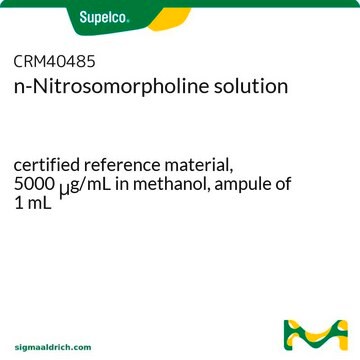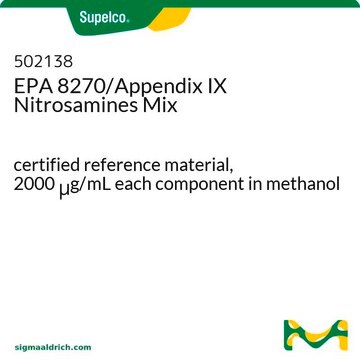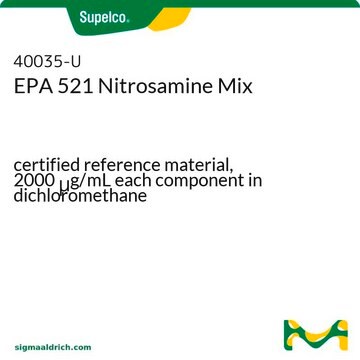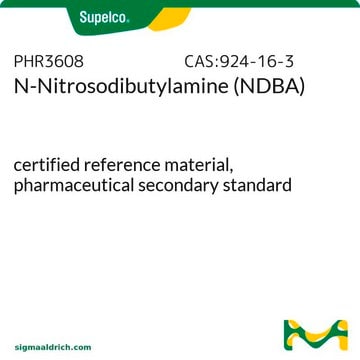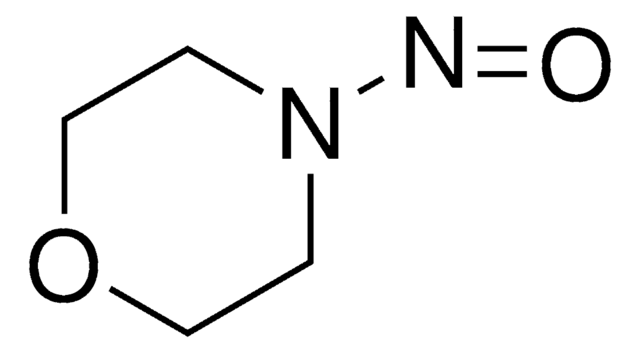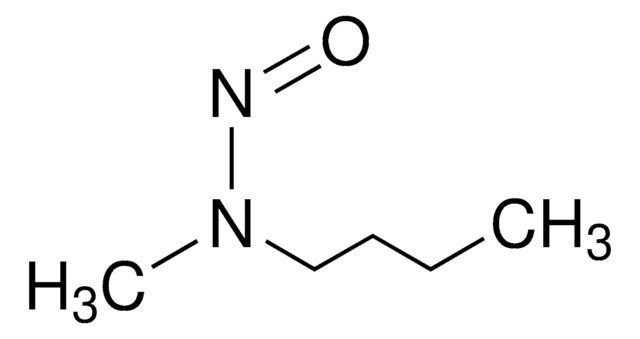This product has a melting point of 29 °C. Depending on temperature, it may be in the form of a solid or liquid. This product is considered to be "neat" or 100% pure. Thus, a solution may be prepared at a defined concentration by weighing. The density of the liquid form, as reported in the literature, is 1.2 - 1.3 g/ml.
About This Item
Recommended Products
form
solid
SMILES string
O=NN1CCOCC1
InChI
1S/C4H8N2O2/c7-5-6-1-3-8-4-2-6/h1-4H2
InChI key
ZKXDGKXYMTYWTB-UHFFFAOYSA-N
Looking for similar products? Visit Product Comparison Guide
Related Categories
Signal Word
Danger
Hazard Statements
Precautionary Statements
Hazard Classifications
Acute Tox. 3 Oral - Carc. 2
Storage Class Code
6.1C - Combustible acute toxic Cat.3 / toxic compounds or compounds which causing chronic effects
WGK
WGK 3
Flash Point(F)
Not applicable
Flash Point(C)
Not applicable
Personal Protective Equipment
Choose from one of the most recent versions:
Already Own This Product?
Find documentation for the products that you have recently purchased in the Document Library.
Customers Also Viewed
Articles
Cancer research has revealed that the classical model of carcinogenesis, a three step process consisting of initiation, promotion, and progression, is not complete.
-
Buenos días, este material es líquido, ¿podrían por favor indicar cual es la concentración de NMOR en el vial? No la he localizado en el CoA ni en la información disponible en web. Muchas gracias por adelantado
1 answer-
Helpful?
-
Active Filters
Our team of scientists has experience in all areas of research including Life Science, Material Science, Chemical Synthesis, Chromatography, Analytical and many others.
Contact Technical Service
